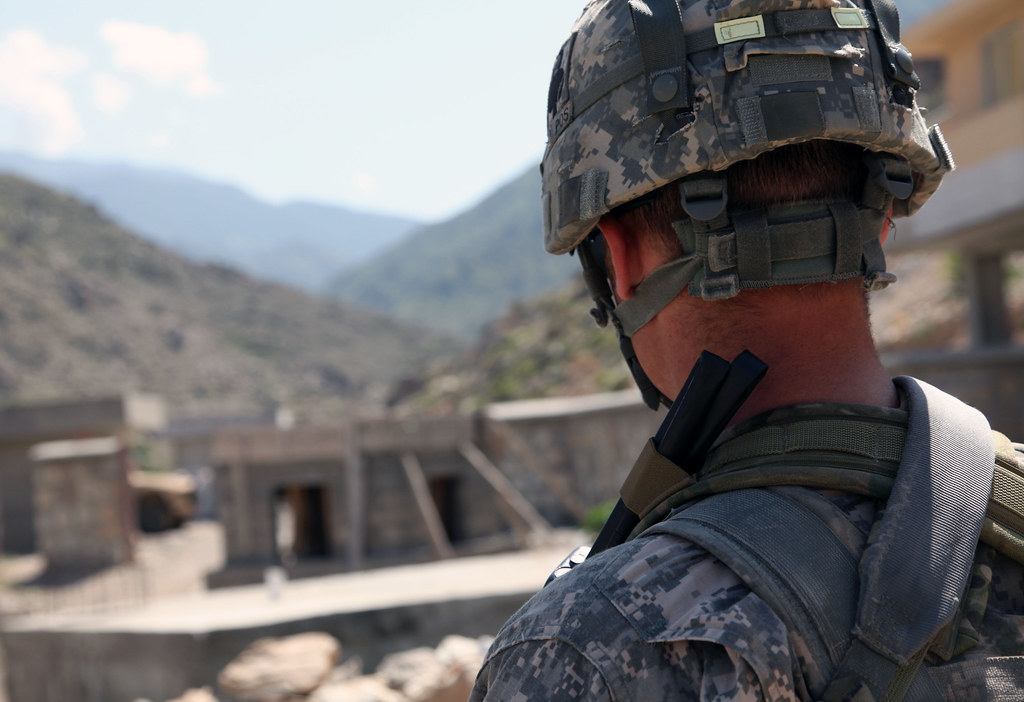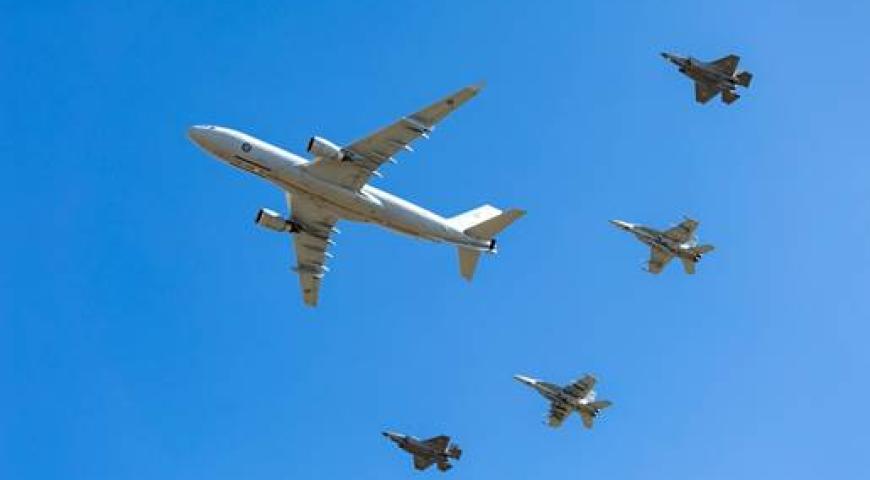Introduction
Counterinsurgency (COIN) was the principle strategy employed by Washington through-out the US-led Operation Enduring Freedom (OEF) which was later enhanced and further strengthened under NATO-led International Security Assistance Force (ISAF).
To the US military insurgency lays in the middle of the conflict prism, ranging between volatile peace to all out war. This volatility confined in the prism is largely referred as irregular warfare, a systematic prolonged armed struggle by violent non-state actors in an effort to influence the masses. To ensure prolonged instability, violent non-state actors employ insurgency, counter-insurgency and irregular warfare tactics to instil fear and assert superlative authority and influence over the masses.
There are three key differences which separates Counter-Insurgency operations with conventional warfare. Firstly, COIN operations are largely conducted in urban/sub-urban regions directly interfering in the lives of masses. Secondly, opposite forces (armed militia) prefer to engage outside forces indirectly, direct confrontation is avoided. Lastly, opposite forces and outside armed units are unable to differentiate who’s who during armed confrontation.
Under the aforementioned circumstance, the deployed platoon leader or a unit commander needs to exercise caution while carrying out COIN operations following the international humanitarian law, particularly the law of armed conflict. Although, in the light of extensive challenges covered by the framework, the rules — in comparison with the complexities involved in unconventional warfare — are inadequate and obsolete.
This element of the international Humanitarian Law, as a doctrine, remains lex specialis derogat legi generali which is exclusive to the law of armed conflict. In case of a void in IHL, the framework must be reinforced by law of human rights. In accordance to the Lex Specialis doctrine, the specific laws have precedence in situations where too many laws are applicable. Considering the International Humanitarian Law as lex specialis and human rights law as lex generalis, the irregularities occurring during interpretation of law of armed conflict must be reinforced by using the human rights law as a reference.
The article produces arguments by showcasing certain evolutions attained much recently in the domain of international humanitarian law reinforced by new arguments presented by legal theorists on the ECHR, which may fill the void in IHL during its application in complex combat operations such as in Afghanistan and Syria.
The article, then highlights and analyses certain decisions/ judgements produced under the auspices of ECHR in accordance to conventional and complex military operations. Then, it discusses the laws and legislations governing troops fighting in Afghanistan theatre. Later, the paper analysis certain sensitive cases pertaining to use of aggressive lethal force and protection of civilians in armed conflict. These case discussions highlight on the fact that human rights legislation can broadly be applied in complex situations, when traditional International Humanitarian Law prove ineffective and insufficient.
Counter-Insurgency (COIN) and European Commission of Human Rights Jurisprudence
The European Commission of Human Rights (ECHR), by accent is a topical court which pronounces judgement/carries out rulings on subjects pertaining to a nation’s concession & ratification with the European Convention on Human Rights, 1950, has no jurisprudence in accordance to the law of armed conflict. Nonetheless, the court has carried out an in-depth assessment on the exertion of force exercised by a signatory member state operating directly/indirectly within or beyond its external boundaries.
In accordance with the case pertaining to counter-terror operations (in consultation with experts from the UK) in Gibraltar and building up to the decisions taken concerning the Chechnya war, the court made key judgments. The key judgements were made after carefully taking into account the operational capability of the field commanders and platoon units during the operation— in an effort to rule out the possibility of excessive force used by the platoon leaders and the role of state authorities to control or prevent in such scenarios— intentionally, consciously and meticulously— hence, failing to minimise unnecessary loss of life. After careful examination of evidence, the Court concluded that the commanders did not take extreme precaution during planning particularly in urban and sub-urban areas, and aggressively employed firepower in regions dominated by civilian community hindering the ability of platoon leaders to differentiate between enemy combatant and civilian masses.
Moreover, the Court referred urban-fire engagements to the Convention of 1950, bringing this fire-fight under traditional law enforcement domain. The Court maintained a higher stance on right to life in comparison to the international law and asked for severe precautions during armed conflict. The Court further kept aside the traditional theory on the use of lethal force against citizens as inevitable while side-lining the collateral damage theory as it was only applicable during mistakenly killing of innocent civilians or unintentionally killed in around the fighting zones, not applicable to fire-engagements where loss aversion concept was neither considered during planning nor adequately maintained during operations.
Understanding the legalities applicable to complex operations in Afghanistan theatre
Restrictions on fire-engagements during complex military operations, such as COIN, are pre-dominantly influenced by the international law, followed by domestic law of troop giving nations, mission directives and domestic laws of the host country. In accordance to Afghanistan theatre, the scenario is complex. Troopers are specifically tasked to respect the local law and traditionality’s of the Afghan society, while also keeping into account the UN mandate.
In accordance to the agreement between the government of Afghanistan and ISAF, the ISAF personnel including the support and liaison staff, entitled to relaxations and privileges under the Military Technical Arrangement (MTA) will respect Afghan laws to the extent of United Nations Security Council Resolution 1386 and will not participate or voluntarily exercise in activities that deviates from the mission. The agreement further brings deployed soldiers under the jurisdiction of their contributing states. Moreover, in case of a serious violation, the Arrangement has left the judgement/extent of punishment to the respective troop contributing nation.
Furthermore, in accordance to the Arrangement the soldiers deployed under the mission have been tasked to employ all means necessary to fulfil the mission. However, not stating clearly, the authorization to employ lethal force is only applicable during
(1) fired upon principle
(2) aggressive/offensive posture in an on-going operation with the objective to neutralise the enemy or on troops first contact. A trooper, fearing a threat to his/her life or to others may open fire.
Some elements of COIN operations are offensive in nature. The ISAF and partnered Afghan National Security Force (ANSF) needs to carefully identify and neutralise threats throughout the region. The complexities developing in these scenarios satisfy all grounds to employ force, however, troops are, mostly bound, to operate under (a) the rules of engagement (ROE) defined by the HQ in consultation with regional command and (b) the law of armed conflict. Planners before the final confirmation for execution of operations in such high-intensity regions dictate platoon and company commanders to employ use of force in accordance to the international law and in scenarios with necessity.
Legal Conundrum: International Humanitarian Law and Law on Human Rights on protection of civilians and employment of lethal force
During skirmishes and prolonged fire-engagements between militant and ISAF led forces, civilians face enormous casualties. They frequently get hit by incoming coalition aircraft, which are deployed to support ground forces. However, most civilian casualties occur during indiscriminate call for air support. Still, NATO continues to rely on air support.
Loss of civilian casualties during skirmishes, does not necessarily fall under the category of human rights violation. Although, International Humanitarian Law formally forbid the loss of civilian lives during combat, extensive in a way which non-reciprocates the mission directives/objectives. This matter is clearly explained in the Additional Protocol I of 1979, which is a further addition to the 1949 Geneva Convention and which exclusively highlights protection of civilians during war.
Interestingly, the International Humanitarian Law, maintains a balance between necessary use of military force and human rights. In accordance to the Protocol I, the Article 51 explicitly abstain the use of violence/harm against civilians. It exclusively relies on proportional balance between conflict of interest & morality.
In accordance to the human rights principle, the idea of an element threatening or preparing to take a life, is understood quite differently, use of force should be exercised only to protect civilians from violence. No military ethics, in any form, justify the use of violence against civilians. This hypothesis remains to be accepted as a complete fact by jurists in the theory of Modern Warfare.
Noteworthily, the European Court on Human Rights in its judgement on the UK’s (and its allies) COIN operations in Ireland, in 1995, opined that the element of proportionality would fail in case of disproportionate use of excessive force which, organizations involved, failed to avoid loss of civilian lives, intentionally or unintentionally. The ECHR implied the aforementioned opinion in case of skirmishes, brief fire-engagements, terror operations and large-scale battle.
For platoon and battalion commanders, the interpretation and application of law of armed conflict occurs during rules of engagement (ROE). Company/platoon commanders have different ROEs established by battalion COs to ease their transition and reinforce their WHAM (winning hearts and minds) strategy. Ironical, these commanders are not consulted during formulation processes of respective ROEs. Reinforcing their opinion followed by the relevant judgements/ previous cases pertaining to the use of lethal force may assist relevant institutions to establish precautionary measures.
It is also evident from the Article 51(2) of the Additional Protocol I,1949, Geneva Convention, which explicitly prohibits the loss of civilian life during any military operation. Ironically, this statement is a general rule which do not have formal insight or explanation. Also, it does not mention the habitation of local militia within the masses, nor does it mention rules or laws applicable in case of fire-engagements occurring in such a location, when military establishments decide to target and eliminate them. Such operational environment exists in the theatres of Afghanistan and Syria, where local militia embed themselves within civilian masses, thus creating a challenge for commanders to eliminate the threat without absolute/minimal loss to civilian life. These rules further fail to implement in unconventional situations, where the threat perception is large due to heavy presence of militias armed with technical weapons and large ammo cashes, determined to fiercely engage with coalition forces.
Another issue pertains to voluntary pre-emptive pre-cautionary announcements. Article 57(2)(c) of Additional Protocol I,1949, Geneva Convention, tasks commanders to make a pre-emptive pre-cautionary announcement in residential areas before commencing an operation. This clause becomes highly ineffective in scenarios, where civilian masses have been taken hostage by insurgent groups, eliminating the element of surprise.
Conclusion
Legislations identifying employment of lethal force during combat environments should identify or formulate legal apparatus to assist commanders in minimising loss of civilian lives while identifying and countering threats, in an effort to prevent civilian casualties by opposing forces. This objective is significantly achieved when the jurisprudence of International Humanitarian Law adds to the application/operational concepts of Law on Human Rights.
COIN operations are largely conducted in residential regions. To eliminate the insurgency, platoon commanders employ CQB (Close Quarter Combat) tactics for effective outcomes. In such an environment, implementing the ROEs in accordance to the established aforementioned discussed laws, could exponentially increase the threat to civilian lives. ROEs are principle in any combat situation as they not only ensure the safety of the masses but also increase the trust in rule of law. Taking a commander’s viewpoint, they denounce the insurgency/violence in all forms, releases pressure & gain trust of local masses, while ensuring the safely return of involved troops. The essence of rule of Law is not about restrain, but to progress under limitation.
@Anant Mishra is currently pursing his research in Homeland Security & Counterterrorism at the Institute of Forensic Science, Gujarat Forensic Sciences University, Gujarat.
Defence Mastery
Social Mastery
Please let us know if you have discovered an issue with the content on this page.
Comments
Start the conversation by sharing your thoughts! Please login to comment. If you don't yet have an account registration is quick and easy.




